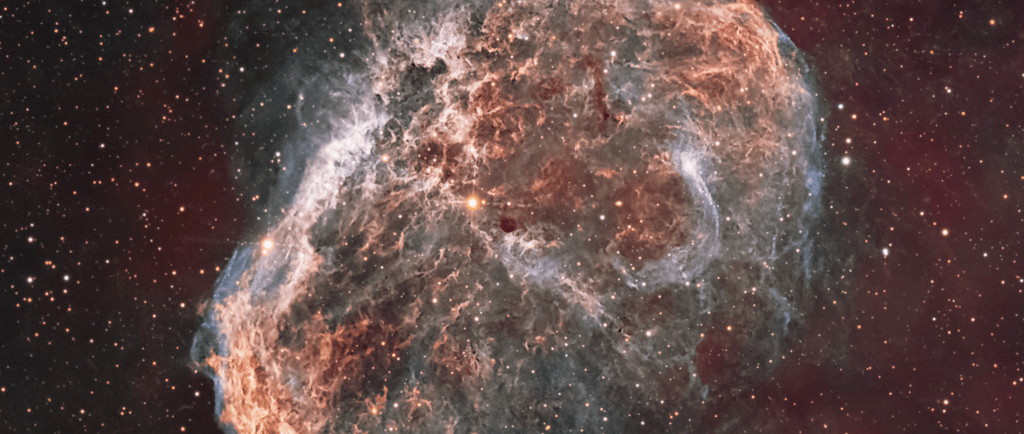NGC 6888: The Crescent Nebula


Introduction to the Crescent Nebula
The Crescent Nebula, scientifically designated as NGC 6888, is a captivating emission nebula situated approximately 5,000 light-years away from Earth in the Cygnus constellation. This celestial wonder stretches across an impressive distance of roughly 25 light-years, showcasing the beauty and complexity of stellar evolution. The nebula is primarily composed of gas and dust, which are illuminated by the surrounding stars, creating a dazzling spectacle visible through telescopes.
The Role of WR 136 in NGC 6888
At the heart of the Crescent Nebula lies the Wolf-Rayet star WR 136. This extraordinary star is approximately 5.1 times the mass of our Sun, nearly 10 times hotter, and boasts a diameter that is 21 times larger. Its luminosity is an astounding 60,000 times that of the Sun, making it one of the brightest stars in our galaxy. The immense energy generated by WR 136 is responsible for the striking illumination of the surrounding nebula, causing the gases to emit a vibrant array of colors. This extensive radiation also plays a crucial role in the nebula's formation and development, influencing its structure and appearance.
The Scientific Significance of NGC 6888
The Crescent Nebula serves as an important laboratory for astronomers studying stellar evolution and the life cycle of massive stars. As WR 136 progresses through its life cycle, it sheds significant amounts of matter, enriching the surrounding medium with heavier elements. This process contributes to the cosmic recycling of materials, influencing the formation of new stars and planetary systems. Additionally, the nebulous structure of NGC 6888 provides valuable insights into the dynamics of gas and dust in the cosmos, suggesting how various forces shape nebulae throughout the universe.
In conclusion, NGC 6888 stands as a testament to the incredible phenomena occurring in our universe. Its distinct emission features, combined with the presence of WR 136, offer an extraordinary opportunity for research and exploration. As technologies advance, the study of this nebula will continue to yield new discoveries, enhancing our understanding of the life cycle of stars and the intricate details of our cosmic neighborhood.
